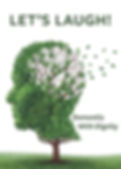Dr Ayan Basak MD DNB
Consultant Psychiatrist
+91 94335 20202
Mental illnesses, also known as mental health disorders, encompass a wide range of conditions that affect a person's thinking, feeling, behavior, and overall emotional well-being. These disorders can impact daily life, relationships, and general functioning. Mental illnesses are typically classified into several categories, based on their symptoms, causes, and treatment approaches. Below is an overview of common mental illnesses and their classification:

1. Anxiety Disorders
Anxiety disorders are characterized by excessive fear, worry, or nervousness. These feelings can become overwhelming and interfere with daily life.
-
Generalized Anxiety Disorder (GAD): Persistent and excessive worry about various aspects of life.
-
Panic Disorder: Recurrent and unexpected panic attacks, often accompanied by a fear of their recurrence.
-
Social Anxiety Disorder: Intense fear of social situations and being judged or embarrassed.
-
Specific Phobias: An intense fear of specific objects or situations (e.g., heights, spiders).
-
Agoraphobia: Fear of being in situations where escape may be difficult, such as crowded places or open spaces.
2. Mood Disorders
Mood disorders primarily affect a person’s emotional state, leading to intense mood swings or prolonged periods of depression.
-
Major Depressive Disorder (MDD): Persistent feelings of sadness, hopelessness, and loss of interest in activities.
-
Bipolar Disorder: Characterized by extreme mood swings that include emotional highs (mania or hypomania) and lows (depression).
-
Cyclothymic Disorder: A milder form of bipolar disorder, with less severe mood swings.

3. Obsessive-Compulsive and Related Disorders
These disorders involve the presence of obsessions (persistent, intrusive thoughts) and/or compulsions (repetitive behaviors or rituals).
-
Obsessive-Compulsive Disorder (OCD): Intrusive thoughts and the need to perform certain rituals or behaviors to alleviate anxiety.
-
Hoarding Disorder: Difficulty discarding items, leading to clutter and distress.
-
Body Dysmorphic Disorder (BDD): Obsession with perceived flaws or defects in physical appearance.
-
Trichotillomania (Hair-Pulling Disorder): Recurrent pulling out of one's own hair.
4. Psychotic Disorders
Psychotic disorders involve distorted thinking, perception, and understanding of reality.
-
Schizophrenia: A chronic disorder that causes hallucinations, delusions, and disorganized thinking.
-
Schizoaffective Disorder: A condition combining symptoms of schizophrenia and mood disorders (e.g., depression or bipolar disorder).


5. Eating Disorders
Eating disorders involve abnormal or disturbed eating behaviors and can severely affect physical health.
-
Anorexia Nervosa: Restriction of food intake, fear of gaining weight, and a distorted body image.
-
Bulimia Nervosa: Binge eating followed by behaviors like purging (vomiting or excessive exercise).
-
Binge-Eating Disorder: Recurrent episodes of eating large amounts of food without purging.
6. Personality Disorders
Personality disorders involve persistent patterns of behavior, thoughts, and feelings that differ significantly from societal expectations, often leading to relationship difficulties.
-
Borderline Personality Disorder (BPD): Instability in relationships, self-image, and emotions, often with impulsive behaviors.
-
Antisocial Personality Disorder: Disregard for others' rights, often accompanied by criminal behavior.
-
Narcissistic Personality Disorder: A pattern of grandiosity, need for admiration, and lack of empathy.
-
Avoidant Personality Disorder: Extreme shyness, fear of criticism, and social avoidance.
-
Dependent Personality Disorder: A need to be taken care of, leading to submissiveness and fear of separation.
-
Obsessive-Compulsive Personality Disorder (OCPD): A preoccupation with orderliness, perfectionism, and control.


7. Neurodevelopmental Disorders
These disorders typically appear in childhood and involve developmental deficits that affect behavior, learning, and functioning.
-
Autism Spectrum Disorder (ASD): Difficulty with social interactions, communication, and restricted, repetitive behaviors.
-
Attention-Deficit/Hyperactivity Disorder (ADHD): Inattention, hyperactivity, and impulsivity.
-
Intellectual Disability: Limitations in intellectual functioning and adaptive behavior.
8. Trauma and Stressor-Related Disorders
These disorders are a response to a traumatic or stressful event and can cause significant distress and impairment.
-
Post-Traumatic Stress Disorder (PTSD): A reaction to witnessing or experiencing a traumatic event, characterized by flashbacks, nightmares, and hypervigilance.
-
Acute Stress Disorder: Similar to PTSD, but symptoms occur immediately after the trauma and last for a shorter period (usually up to a month).
-
Adjustment Disorder: Difficulty coping with or adjusting to significant life changes or stressors.


9. Neurocognitive Disorders
Neurocognitive disorders are primarily associated with cognitive decline, typically due to aging or injury.
-
Dementia: A decline in cognitive function, with Alzheimer's disease being the most common form.
-
Delirium: A sudden, short-term decline in mental function, often caused by illness or medication.
-
Amnestic Disorders: Memory problems not explained by typical aging.
10. Somatic Symptom and Related Disorders
These disorders involve the presence of physical symptoms that cannot be fully explained by medical conditions.
-
Somatic Symptom Disorder: Excessive worry about physical symptoms, leading to significant distress and impairment.
-
Illness Anxiety Disorder: Preoccupation with the fear of having a serious illness, despite few or no symptoms.
-
Conversion Disorder: Neurological symptoms (e.g., paralysis or blindness) that cannot be explained by medical conditions.
